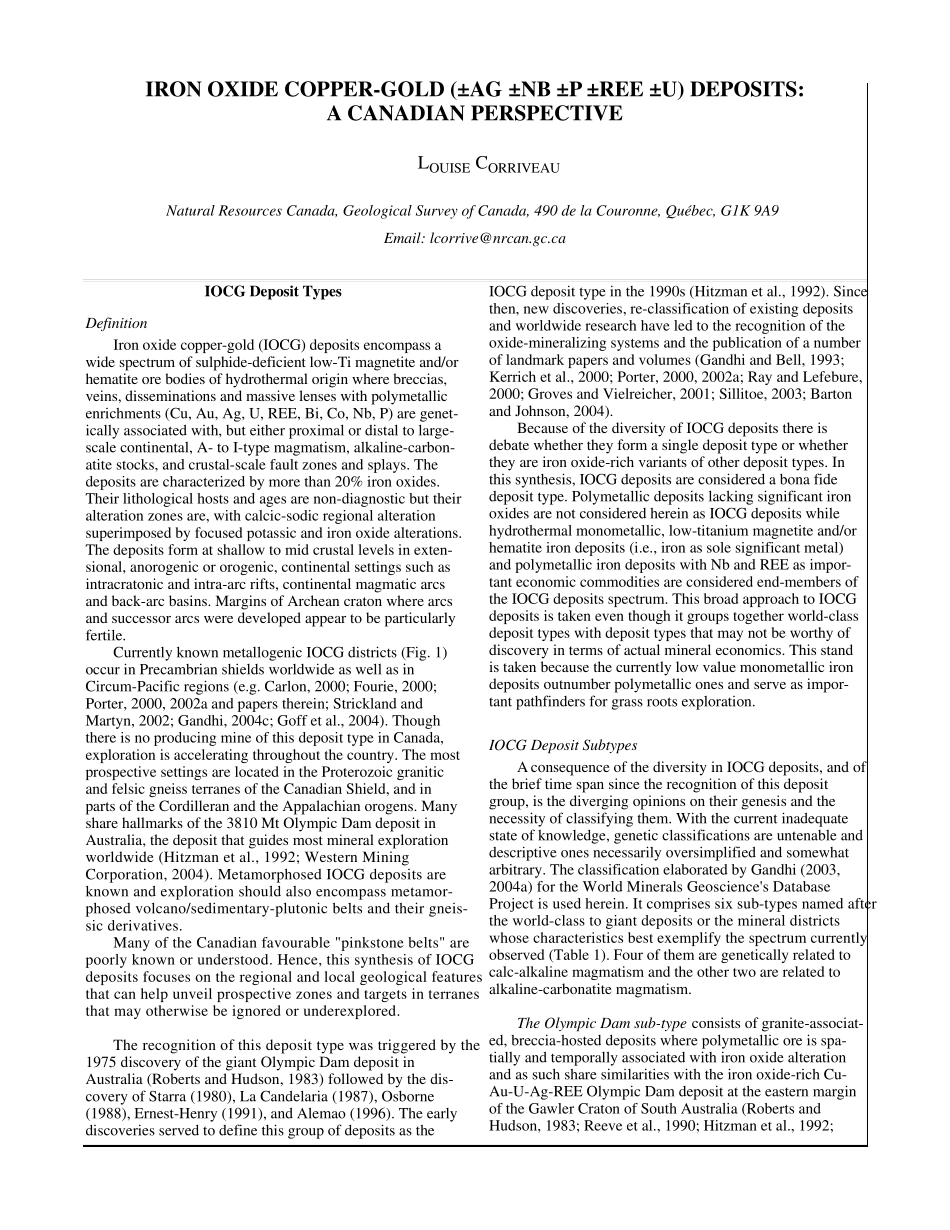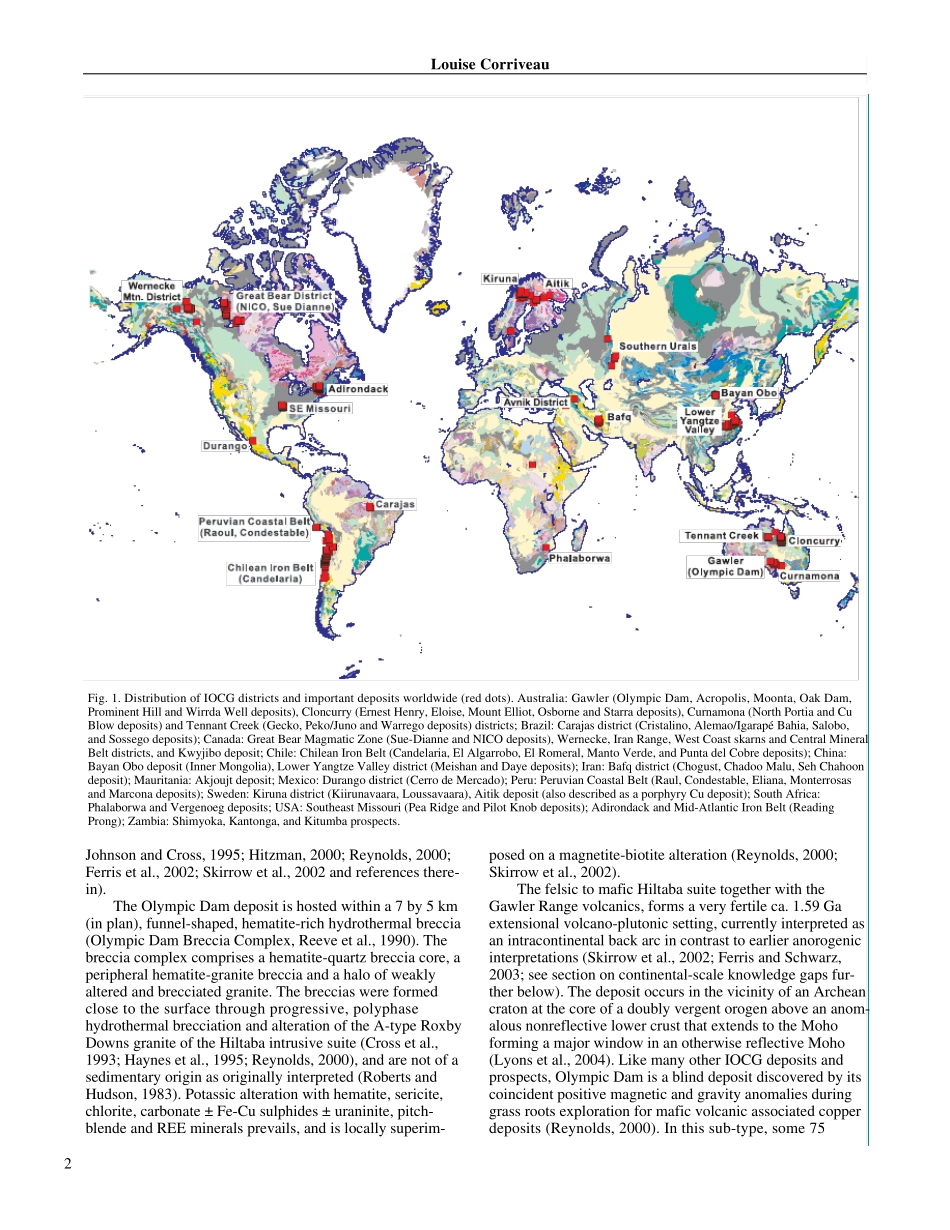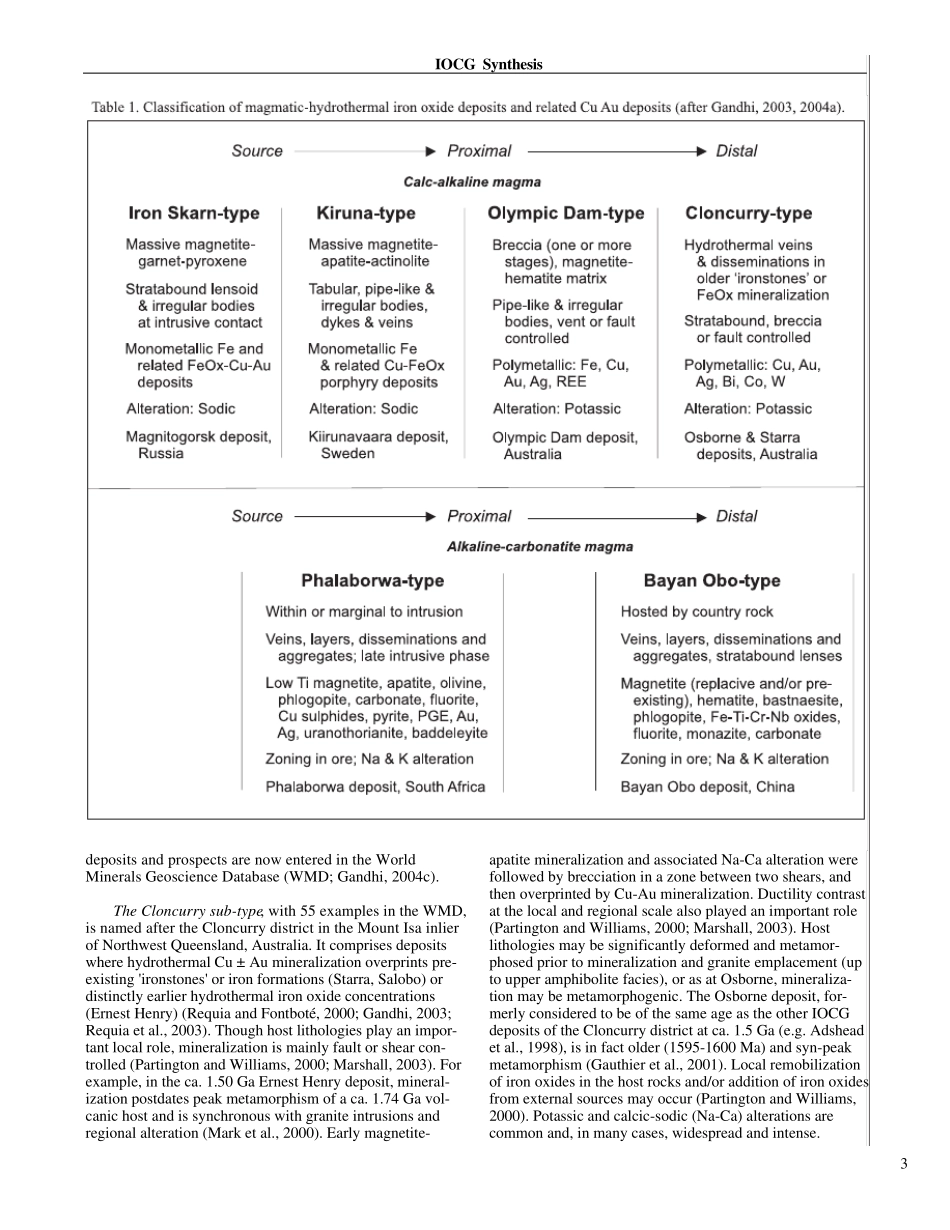IRON OXIDE COPPER-GOLD (±AG ±NB ±P ±REE ±U) DEPOSITS: A CANADIAN PERSPECTIVELOUISE CORRIVEAUNatural Resources Canada, Geological Survey of Canada, 490 de la Couronne, Québec, G1K 9A9Email: lcorrive@nrcan.gc.caIOCG Deposit TypesDefinitionIron oxide copper-gold (IOCG) deposits encompass awide spectrum of sulphide-deficient low-Ti magnetite and/orhematite ore bodies of hydrothermal origin where breccias,veins, disseminations and massive lenses with polymetallicenrichments (Cu, Au, Ag, U, REE, Bi, Co, Nb, P) are genet-ically associated with, but either proximal or distal to large-scale continental, A- to I-type magmatism, alkaline-carbon-atite stocks, and crustal-scale fault zones and splays. Thedeposits are characterized by more than 20% iron oxides.Their lithological hosts and ages are non-diagnostic but theiralteration zones are, with calcic-sodic regional alterationsuperimposed by focused potassic and iron oxide alterations.The deposits form at shallow to mid crustal levels in exten-sional, anorogenic or orogenic, continental settings such asintracratonic and intra-arc rifts, continental magmatic arcsand back-arc basins. Margins of Archean craton where arcsand successor arcs were developed appear to be particularlyfertile.Currently known metallogenic IOCG districts (Fig. 1)occur in Precambrian shields worldwide as well as inCircum-Pacific regions (e.g. Carlon, 2000; Fourie, 2000;Porter, 2000, 2002a and papers therein; Strickland andMartyn, 2002; Gandhi, 2004c; Goff et al., 2004). Thoughthere is no producing mine of this deposit type in Canada,exploration is accelerating throughout the country. The mostprospective settings are located in the Proterozoic graniticand felsic gneiss terranes of the Canadian Shield, and inparts of the Cordil...


